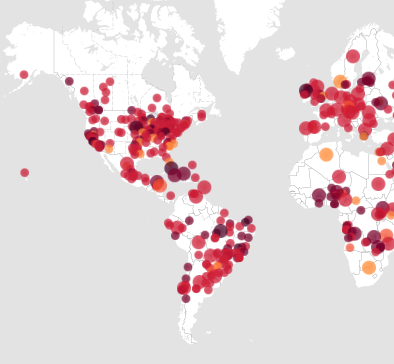
Infectious Gastrointestinal Disease Risk Increase
Increasing temperature, humidity, and rainfall can increase diarrhea, infectious gastrointestinal disease, rotovirus, and salmonella.
Read MoreJan 24, 2017 | Boston Children's Hospital
Global Health Map

Aug 3, 2017 | Scientific Reports
Systematic Assessment of the Climate Sensitivity of Important Human and Domestic Animals Pathogens in Europe
Mar 15, 2017 | The Medical Society Consortium on Climate and Health
MEDICAL ALERT! Climate Change Is Harming Our Health
Aug 1, 2016 | Environmental Research
Extreme precipitation events and increased risk of campylobacteriosis in Maryland, U.S.A.
Increasing temperature, humidity, and rainfall can increase diarrhea, infectious gastrointestinal disease, rotovirus, and salmonella.[1]
Earth Systems Signals
Global warming is causing widespread and rapid changes in the atmosphere, ocean, cryosphere and biosphere.
Heat Signals
The Earth is getting hotter due to human activities that release heat-trapping gases into the atmosphere.
Drought Signals
Climate change is making droughts more likely to occur, and more severe when they do.
Wildfires Signals
Climate change is increasing the size, frequency, intensity and seasonality of wildfires.
Hurricanes Signals
Warmer temperatures increase the rate of water evaporation, which feeds moisture and energy into storms.
Floods Signals
Worsening floods due to climate change are putting a growing number of communities at risk.








